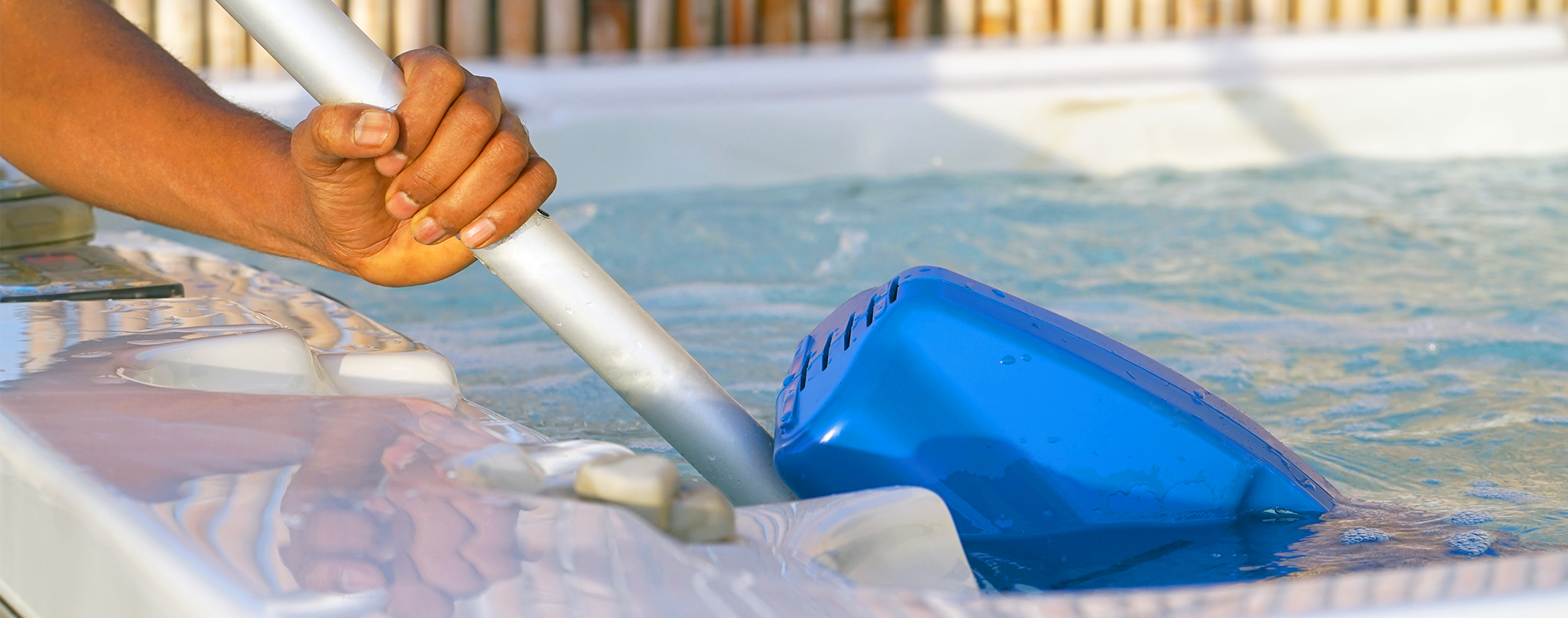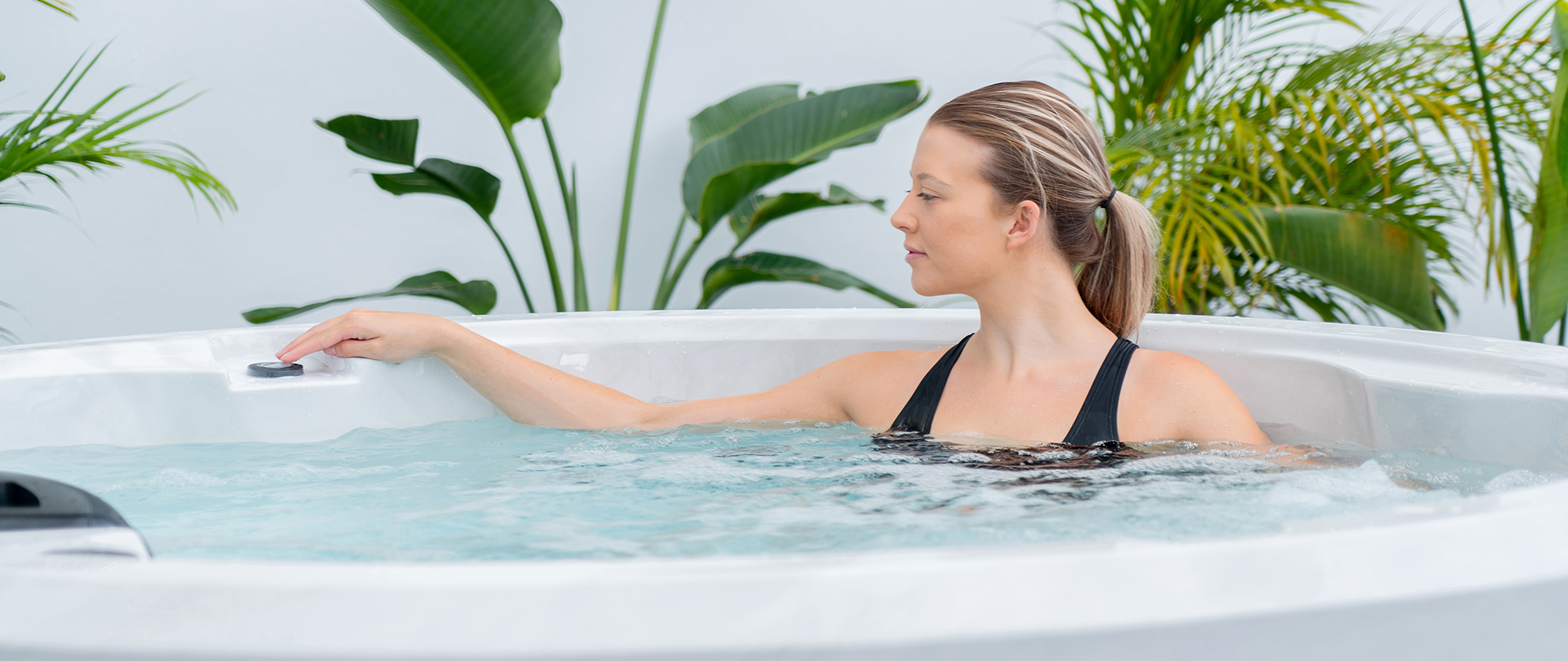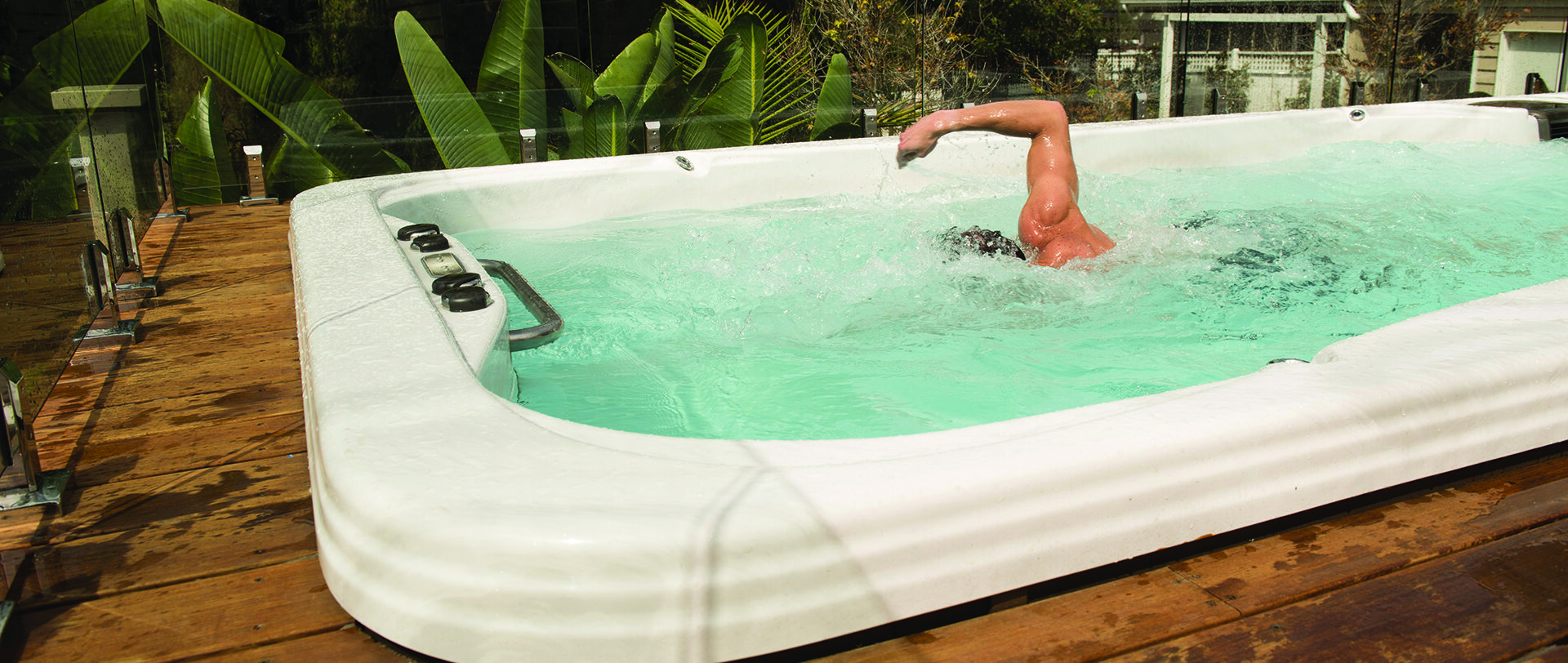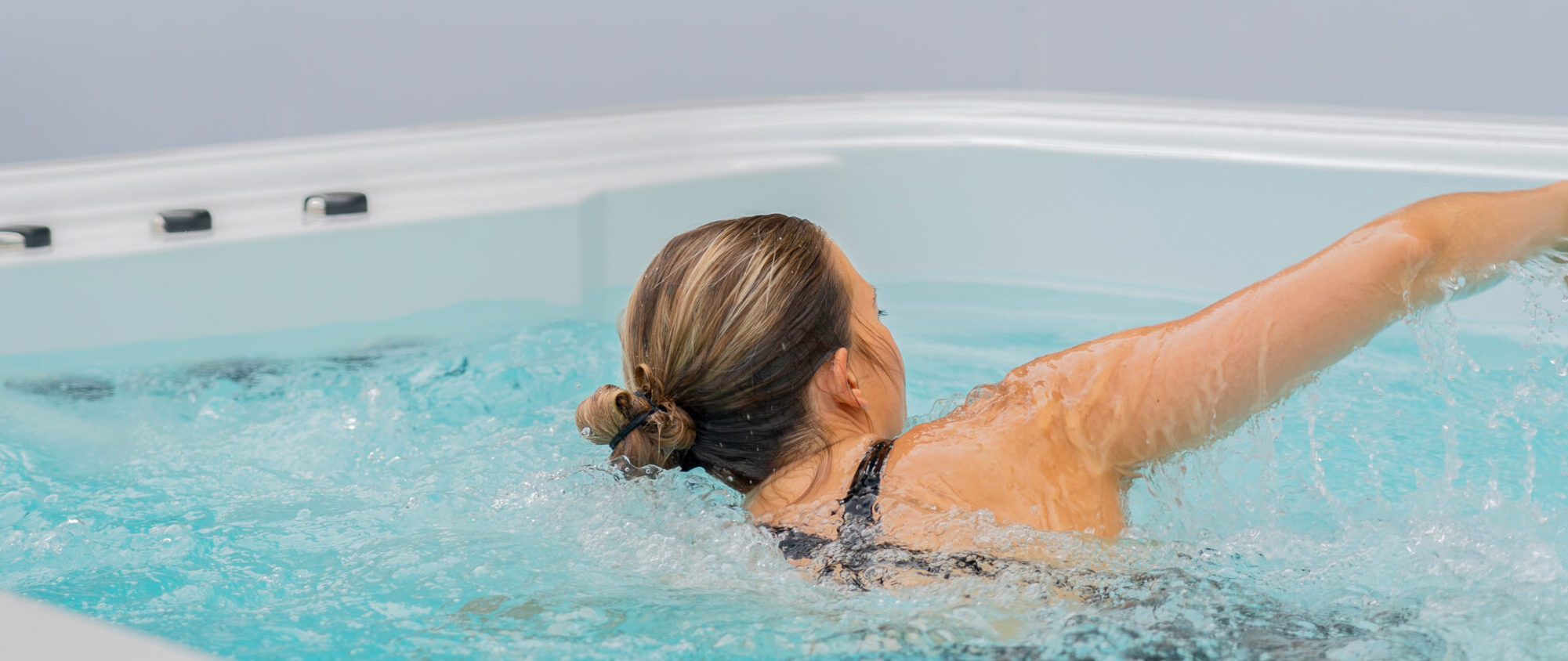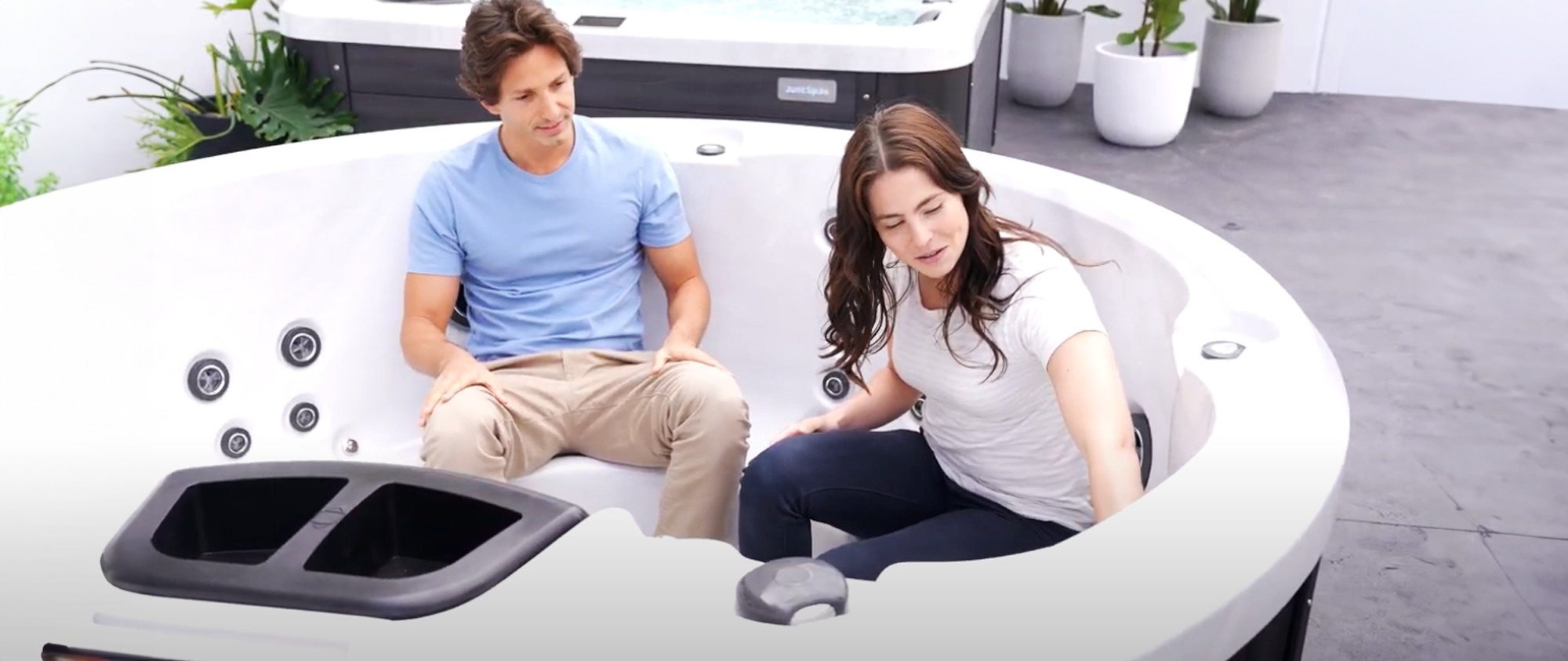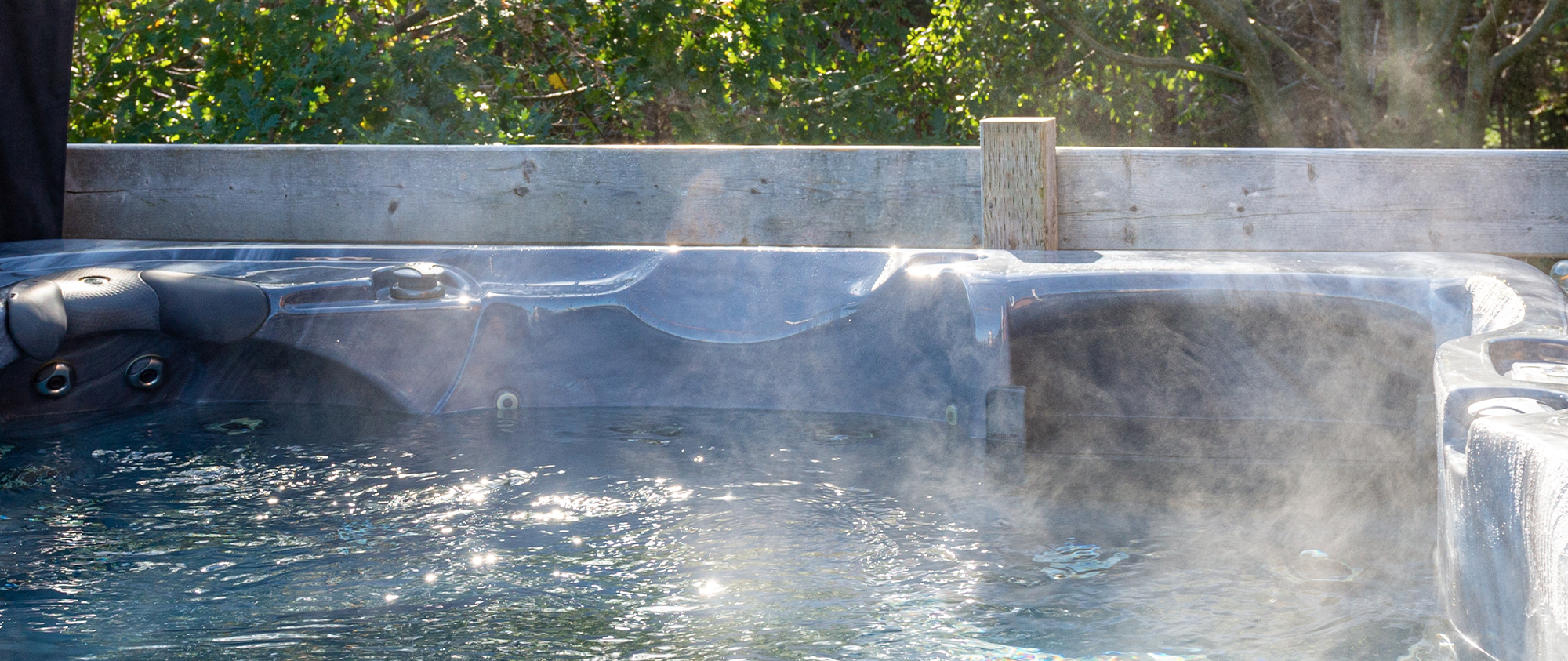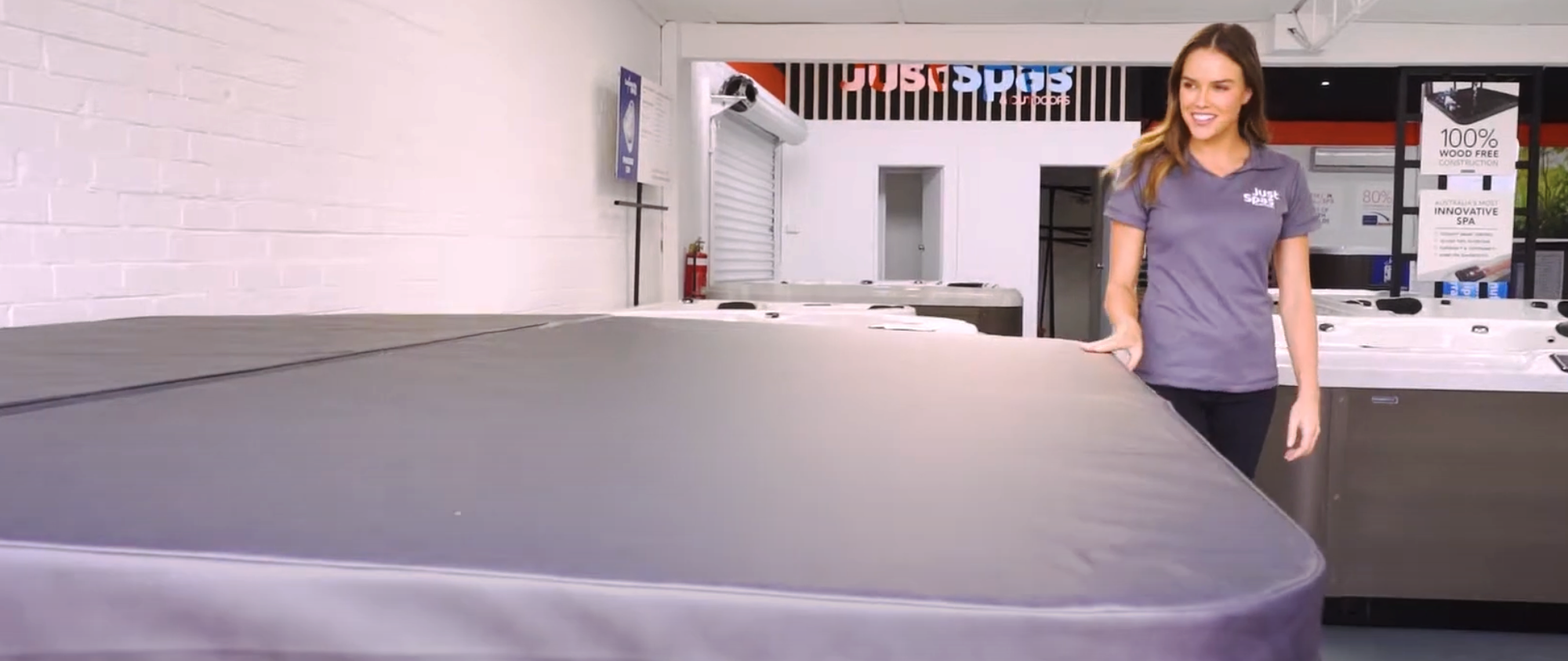What better time of year than the chilly winter to enjoy a warm and relaxing soak in your spa?
At first, just the idea of slipping outside in your swimmers during winter might make you shiver – but when you think about it, spas were made for chilly climates! From traditional ‘Onsen’ in the snowy Japanese mountains to Iceland’s Blue Lagoon, cultures all around the world have enjoyed the hot springs nature has provided us during the colder months for centuries.
Submerging yourself in the warm, therapeutic waters of your spa is a way to emulate this same practice from the comfort of your own backyard – loosen up those tightly wound muscles, relax those stiffened joints and enjoy both the health and social benefits of your spa in winter.
Can you use a spa in winter?
This might be the first question that comes to mind for many – can you actually use your spa in winter? The answer is of course, yes, but there are a few things to take note of.
In actual fact, it’s usually better for your spa’s health to keep it running throughout the winter. Preparing it for the winter season will mean doing a thorough cleaning, which involves draining the spa, cleaning the shell and filtration system. Once you’ve done that, it’s time to enjoy! Here are our 5 tips for using your spa in winter;
1. Keep it covered
Keeping your spa covered when not in use is always important, but particularly in the cooler months when you don’t want the heat to escape. Spa heating can be costly, so a well-insulated cover with a tight-fitting seal is a must. Look for covers that come with locks to ensure they stay put in windy conditions, and if your backyard is prone to wind or hail, keep a brush handy to sweep away any debris to protect it.
2. Integrate aromatherapy to treat your winter cold
Not only can a nice evening in the spa help you sweat out toxins, but with a few drops of eucalyptus oil, you can reap the steamy benefits of sinus-clearing aromatherapy. Think of it like a giant humidifier! Light a few candles and treat yourself to an evening of ultimate relaxation.
3. Don’t go overboard with the jets
Although having the blowers and jets on in the spa might seem like half the fun, it’s important to remember that the air blowing in is cold and will ultimately lower the temperature of the spa water. Feel free to use them, just keep moderation in mind – as your heaters will be working overtime to compensate for the cooler water temperature.
4. Change your water early
Draining and refilling your spa to keep it clean is an important part of spa hygiene, but when it comes to doing so in preparation for the winter season, make sure you do it early before it gets too cold.
5. Transform your spa area into a Winter wonderland
Why not go all out and transform your spa area into the perfect winter wonderland? Keep warm fluffy slippers and a towel robe nearby for when you hop out of the spa, to prevent your body from going into too much shock from the extreme change in temperature. Hang up some fairy lights or lanterns, make some hot cocoa and invest in spa accessories like a heat lamp or cover lifter to make the whole experience easier to manage. Maybe even a spa caddy for drink top ups!
What are the benefits to using a spa in winter?
From a wellbeing perspective, using your spa in winter is an amazing way to relax any tightly contracted muscles. Our bodies tend to stiffen up quite a bit in response to colder climates, and spas provide a hydrotherapy solution to ease joint aches and arthritis. Soothing sore muscles with jets has been a staple of hydrotherapy for many years, and you can enjoy the at-home solution with ease no matter what time of year it is. In winter, we also frequently find ourselves hunched over – in blankets, or coats when outside. Our posture takes a hit from this, meaning we stand to benefit even more from muscle-soothing spa jets during the wintertime.
How much does it cost to run a spa in winter?
Spa costs in general vary widely, with many agreeing they can cost around $1.50 a day based on 3 days per week use. During the wintertime you can expect this to scale up thanks to heating and other spa systems working harder against the cold, but the good news is that there are a number of ways you can mitigate these costs. As we mentioned earlier, ensuring you cover is always on can make the world of difference – a thick and tight-fitting cover will prevent the heat from escaping, so look for one made with dense foam. If you live in a particularly cold climate you may want to seek a cover that fully encapsulates the spa, otherwise, a cover which wraps around the rim of the spa rather than simply sitting on top is much more effective at retaining heat. Enjoying your spa in winter is a must for those looking to enjoy the luxury of their outdoor living area all year round – and with a little preparation and maintenance, not only can you cut down on any extraneous costs, but you just might find yourself looking forward to the wintertime just for a dip in the spa!


